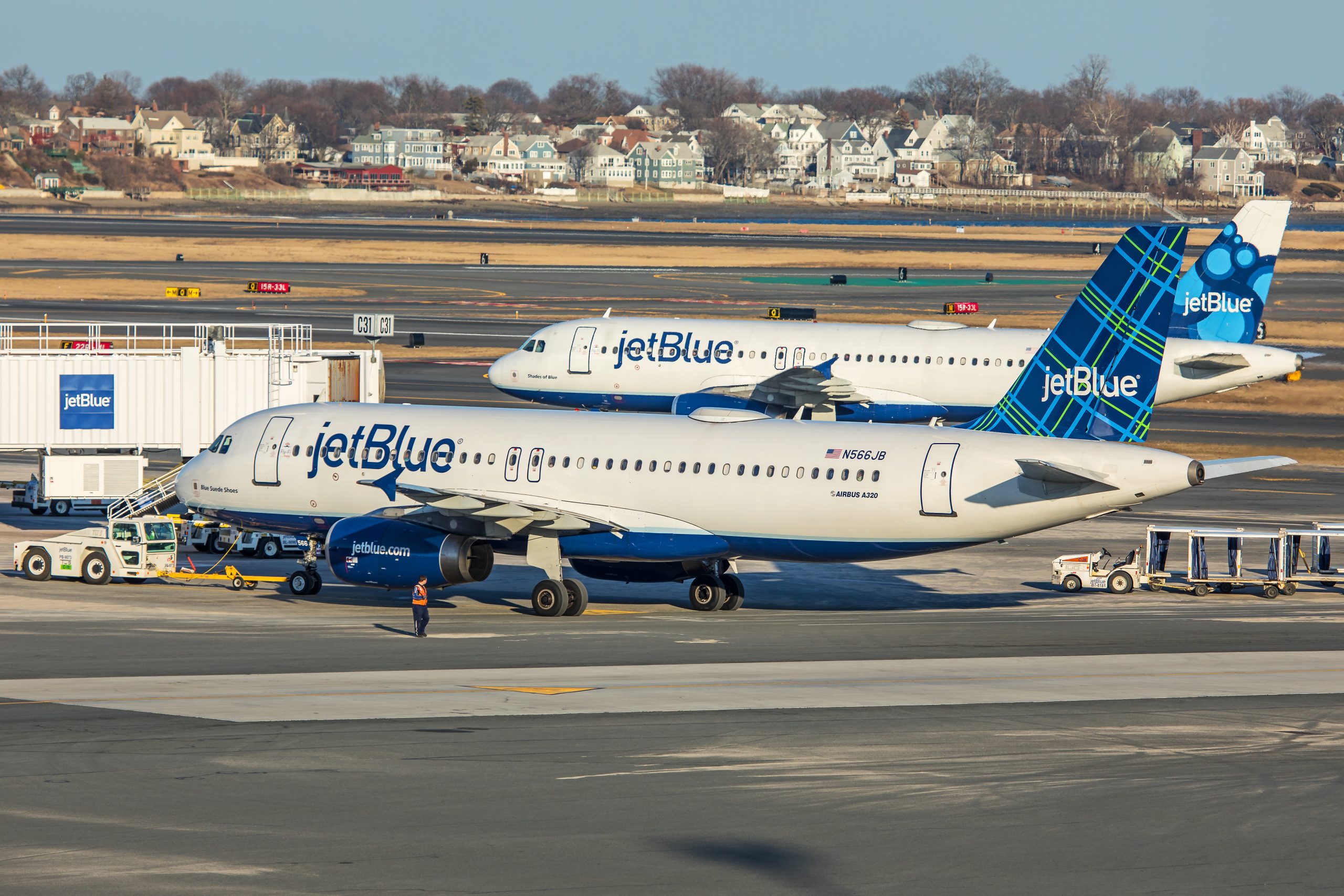
JetBlue Reveals Diminished First Quarter Earnings
On Tuesday, JetBlue announced that it has adjusted its annual revenue forecast. The carrier announced that its revenue will be…

A Vietnam Airlines ATR-72 arrives in Phnom Phenh (Photo: M Radzi Desa GDFL 1.2)
In its annual shareholder meeting on Wednesday, Vietnam Airlines revealed its plans to sell and retire its sub-fleet of ATR-42 aircraft, in addition to its ambitions on establishing a cargo carrier.
The flag carrier of Vietnam announced its plans to establish a cargo carrier amid a recent surge of Covid-19 cases in the country, according to a report from VnExpress. The proposal was in the cards for years, waiting for the right moment to launch the cargo airline, per Vietnam Airlines CEO Le Long Ha. Over the past two years, cargo transport has generated higher revenue for Vietnam Airlines, especially in recent months, causing the plan to be taken more “seriously.”
In June, cargo revenues — which typically make up 10% of total revenue for Vietnam Airlines — surpassed passenger revenues for Vietnam Airlines amid a rise in Covid-19 cases, which prevented a large portion of domestic travel. According to Vietnam Airlines, the carrier converted five Airbus A350-900s and two Airbus A321s into freighter aircraft through the removal of passenger seats in order to generate additional revenue.
Other carriers in Vietnam have taken note of an opportunity in the aviation cargo sector like low-cost carrier VietJet, which converted four of its Airbus A321s to freighter aircraft. Among other factors, cargo revenue allowed VietJet to turn a profit of $3 million dollars, aiming for 20% revenue growth in 2021.
Additionally, Vietnamese retail conglomerate Imex Pan Group is eyeing a 2022 launch for Vietnam’s first cargo-only carrier. The group is planning to form IPP Air Cargo with an initial investment of $100 million.
According to NikkeiAsia, the airline views the market today as ripe for new cargo capacity in the country, citing that foreign competitors hold 90% of the air cargo market share in Vietnam. With an initial fleet of five aircraft, the cargo carrier aims to connect domestic airports to Hanoi and Ho Chi Minh City, collaborating with foreign companies to export Vietnamese goods.
Additionally, Vietnam Airlines announced the retirement of its ATR-72 fleet to improve its competitiveness on regional routes. Since 2019, the airline has eyed a replacement for the aircraft, though it is unknown what aircraft will replace the ATR-72.
Currently, Vietnam Airlines operates seven ATR-72 aircraft — six of which will be available for sale — operated by its regional subsidiary VASCO. One of its ATR-72s is currently leased until August 2022, according to deputy general director Nguyen Chian Trang.
Primarily, these 68-seater birds are deployed to regional airports in Vietnam that are unable to handle larger narrowbody aircraft, including Ca Mau, Con Dao, Dien Binh Phu and Rach Gai. In the past, these routes were profitable monopolies for VASCO, including flights to the archipelago of Con Dao.
However, in the past year, Bamboo Airways has utilized Embraer E190 aircraft to add flights to destinations like Con Dao and Rach Gai, posing a competitive advantage to the turboprop aircraft. Furthermore, Bamboo Airways applied for rights to operate flights to Ca Mau using Embraer E175 aircraft and Dien Binh Phu with Embraer E190 aircraft, which further threaten VASCO’s operation and competitive advantage.
The sale of the six ATR aircraft can also be attributed to increased cash flow for Vietnam Airlines, due to the airline’s financial situation. Last month, Vietnam Airlines announced that it would sell and retire 11 Airbus A321 aircraft to increase cash flow.
Also last month, the Hanoi-based airline received a loan of $178 million from three Vietnamese banks to save the airline from bankruptcy, according to Reuters. Additionally, Vietnam Airlines announced it would raise $347.8 million by issuing more shares to current shareholders. In previous months, banks were not extending credit to the flag carrier, allowing for the possibility of legal proceedings due to its high unpaid debt, according to Dealstreetasia.
For the first half of 2021, Vietnam Airlines lost $427.1 million, estimating losses of $631.525 million for the whole year, up 30% from 2020.
Ever since Winston was a toddler, he has always had a fascination for airplanes. From watching widebodies land at Washington Dulles to traveling the world, Winston has always had his eyes towards the skies. Winston began aviation photography in 2018 and now posts his photos occasionally on his Instagram account. He previously wrote for a blog. In his free time, Winston loves to play chess, do recreational activities, and watch sports. Looking into the future, Winston plans to service the aviation industry.
Receive a daily dose of the airline industry's top stories along with market insights right in your inbox.

On Tuesday, JetBlue announced that it has adjusted its annual revenue forecast. The carrier announced that its revenue will be…

Royal Air Maroc and Safran have deepened their collaboration in aircraft engine maintenance. In celebration of its 25th anniversary, Safran…

The importance of the North American market to Fiji Airways has been further highlighted with the announcement of an interline…



